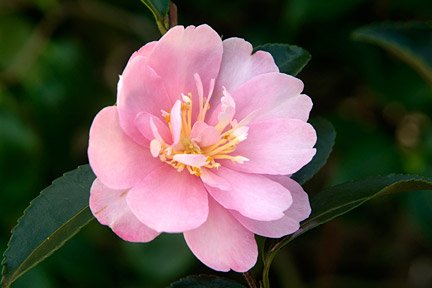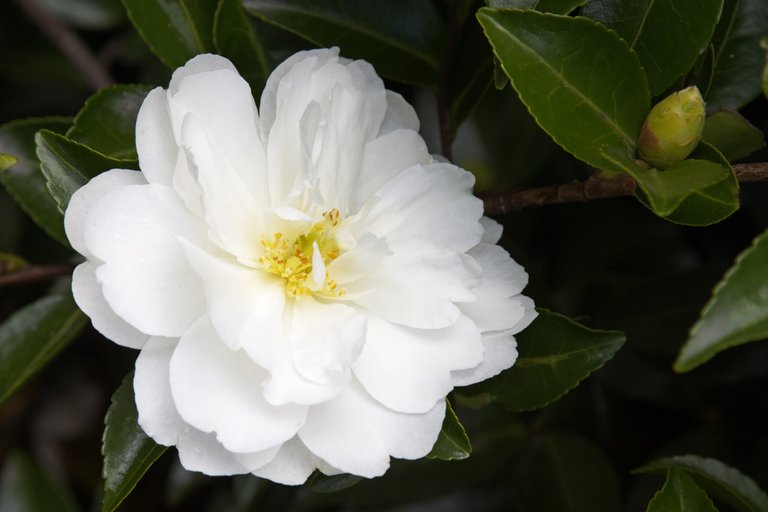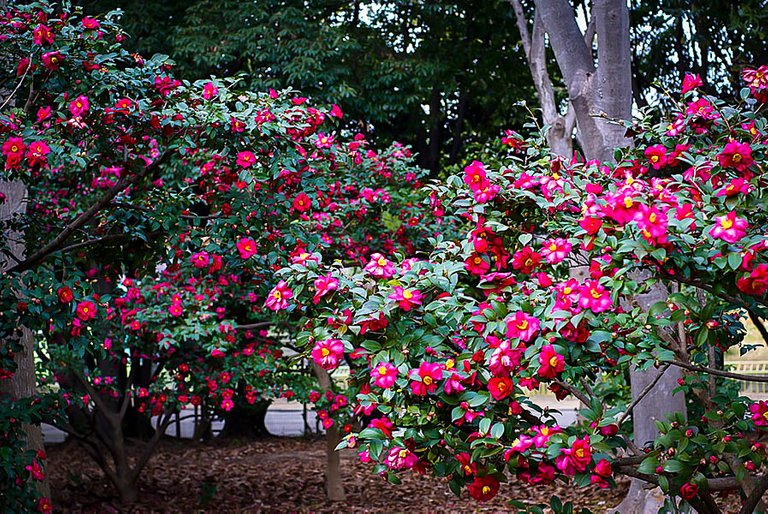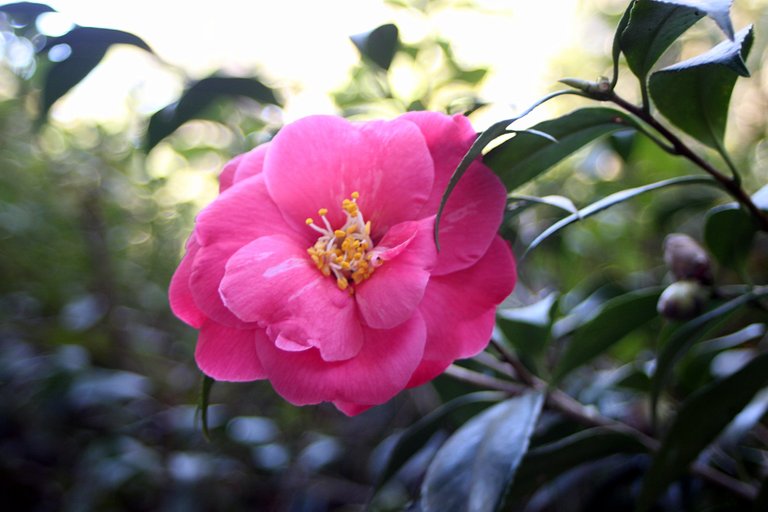Oh, yes, the charming plant @ctrl-alt-nwo, Camellias are one of the most popular winter- and spring-flowering shrubs, providing a vivid splash of colour when little else is in bloom. Although they need acid soil, they are easy to grow in containers of ericaceous (acidic) potting compost.

Site and soil conditions
Camellias are woodland plants that grow best in shelter and light shade, although with careful watering they can be grown in sunny positions. They prefer free-draining conditions, with plenty of organic matter, such as leaf mould, incorporated into the soil.
Being ericaceous plants, camellias require an acid soil. If your soil isn't acid then consider growing your camellia in a container.

Pruning and training
Like other early-flowering shrubs, camellias form flower buds in late summer and autumn, especially on new growth. Pruning at this time could remove potential flowering growth. Therefore pruning is best done in spring, immediately after flowering and following the advice given for other evergreen shrubs.
Where an overgrown camellia needs to be reduced or renovated, hard pruning is usually safe and reliable.

Propagation
Camellias can be propagated from semi-ripe cuttings, hardwood cuttings, layering and grafting. Seed is also an option, but seedlings will not usually come true to parent type.
Semi-ripe cuttings often root better if slightly wounded by taking a 1.5cm (5/8in) strip of bark off the base of the cutting and dipping the wound in hormone rooting compound.
Hardwood cuttings are taken as for semi-ripe cuttings, but between autumn and late winter. They can root in three months.
